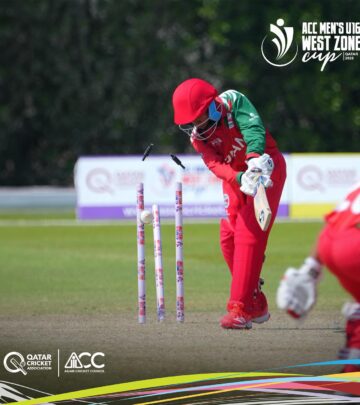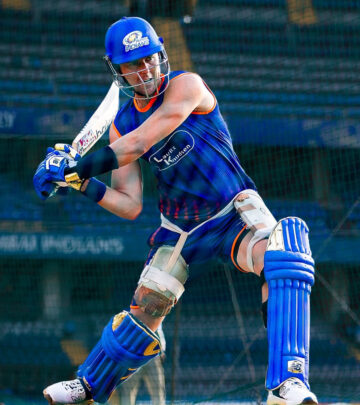Functional Variability: Redefining Fast Bowling Performance
Steffan Jones reveals that dynamic adaptive fast bowling builds mastery over static drills

Image: Instagram
The world of fast bowling is evolving. In an era where traditional repetition is increasingly challenged by adaptive training methods, cricket coach and practitioner Steffan Jones is at the forefront of redefining fast bowling performance. Emphasizing that true performance isn’t built on robotic repetition, Jones explains that stability through variability is the key to achieving consistent results on the field. According to his recent post on Pacelab’s Instagram, “True performance isn’t built on robotic repetition—it’s built on stability through variability.” The message is clear: fast bowling is a dynamic, open skill that requires players to adapt as conditions change.
Understanding Functional Variability
Fast bowling is far from a mechanical act. Every delivery is a complex interplay between technique and external factors such as pitch conditions, weather, batter behavior, and fatigue. Steffan Jones, whose coaching philosophy is complemented by his work with Pacelab, highlights that relying solely on one textbook technique is a recipe for fragility. The essence of his message is that true mastery in bowling comes from stabilizing certain key attractors—like the front foot block, consistent arm speed, and hip-shoulder separation—while still allowing room for flexible expression.
Drawing from his extensive experience, Jones points out that no two deliveries are ever exactly alike. “Fast bowling is an open, dynamic skill,” he notes. One must be prepared to adjust mechanics subtly according to the context of the game. This approach, known as functional variability, is at the heart of Pacelab’s training system. The method involves a mixture of constrained drills, chaos drills, fatigue resilience tracking, and skill noise techniques that ensure bowlers develop a robust, adaptable style rather than merely repeating the same movement over and over.
Training Adaptability
The shift away from repetitive training has been widely discussed among fast bowling enthusiasts. Jones makes a compelling case: a bowler who is overly dependent on one perfect movement will eventually crack under pressure when the conditions deviate from the norm. Instead, training should focus on fostering adaptability. Pacelab’s training modules challenge athletes to perform under varied and sometimes unpredictable scenarios. This prepares them to handle the inherent chaos of match situations.
Recent Instagram posts by Pacelab amplify this message. One standout post features Jones himself, discussing how constrained drills isolate key attractors while chaos drills force bowlers to make task-relevant adjustments in real time. The visual content, which shows a fast bowler captured in mid-action during a training session, reinforces the notion that high performance is achieved by building robustness and endurance rather than insisting on sterile repeatability.
Steffan Jones’ Innovative Approach
Steffan Jones, recognized not only as a coach but also as a thought leader in sports training, has been vocal about the misconception that repetitive practice is the sole route to perfection. His recent commentary on the dynamics of fast bowling underscores the importance of adaptability in skill-based sports. In his own words, “A bowler relying solely on one perfect technique will crack under pressure or fail to adapt.” This philosophy is backed by his extensive work with diverse groups of county bowlers, where the emphasis is on long-term performance and injury prevention.
Jones’s strategy involves an integration of scientific principles—bolstered by modern coaching techniques—with real-world training. By breaking down the mechanics of fast bowling into stabilizable attractors and flexible variables, he ensures that his players are prepared for any challenge. His approach is now being lauded by both colleagues and emerging talent, suggesting a promising shift in cricket coaching paradigms.
Beyond the training ground, Jones’s contributions have sparked broader discussions on the importance of variability in all skill-dominant sports. Other Instagram posts from Pacelab further elaborate on how factors such as weather and batters’ behavior impact a bowler’s performance. These insights are not only enhancing coaching methodologies but are also influencing how future fast bowlers prepare for the demands of competitive cricket.
In addition to his work at Pacelab, Jones’s public engagements and training sessions have provided crucial data on effective fast bowling performance. His willingness to adapt and evolve his techniques demonstrates that mastery in sports is achieved by learning from both successes and setbacks. The training philosophy he advocates is a reminder that in the realm of fast bowling, adaptability is not optional—it is essential.
In summary, the shift from repetitive practice to functional variability represents a significant step forward in fast bowling performance. Steffan Jones and Pacelab are leading the charge by encouraging bowlers to embrace change, adapt dynamically, and build a resilient foundation that stands up to the rigors of competitive cricket. As the sport continues to evolve, so too will the methods that define excellence on the field.
Conclusion
The evolving training philosophies of fast bowling now favor adaptability and robust performance over repetitive precision. With coaches like Steffan Jones championing functional variability, the future of fast bowling looks set to be more dynamic, responsive, and resilient than ever before.
Read full bio of Joyce














